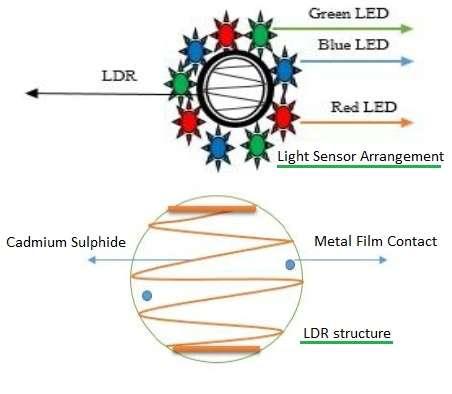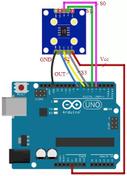Color Sensors and Detectors: A Comprehensive Overview
Advertisement
This page delves into the basics of color sensors and detectors, exploring how they convert light signals into a measurable form.
What is a Sensor?
A sensor is a device that converts one form of energy into another. The sensed value can be directly indicated to a human or indirectly read with the help of an Analog to Digital Converter (ADC) and a display unit.
Color Sensors: Identifying Colors
A color sensor is specifically designed for color sensing. This capability is valuable for color identification or sorting objects by their distinct colors.
Typically, color sensors operate based on the principle of identifying the wavelength of light. Color identification is usually performed within the visible light spectrum, which ranges from 380 nm to 780 nm.
Table 1: Color vs. Wavelength
| Color | Wavelength Range (nm) |
|---|---|
| Violet | 380 to 410 |
| Indigo | 410 to 450 |
| Blue | 450 to 510 |
| Green | 510 to 560 |
| Yellow | 560 to 600 |
| Orange | 600 to 630 |
| Red | 630 to 780 |
Color Detectors: Building the Circuit
A color detector is a circuit built using components such as:
- Light Dependent Resistor (LDR) or Photo Diode
- Basic LEDs (Red, Green, Blue)
- Analog to Digital Converter
- Display Unit
- Micro-controller unit
The design and complexity of color detectors are tailored to specific application requirements.

Modern Color Sensors: Integrated IR Filtering
Many modern color sensors incorporate a built-in Infrared (IR) blocking filter. This filter minimizes the influence of unwanted IR light signals from sources like sunlight and other ambient light. The inclusion of an IR filter leads to more accurate color measurements.
Color Sensor Vendors and Models
The following table showcases some popular vendors and their color sensor models, along with key specifications:
Table 2: Color Sensor Vendors
| Vendor | Color Sensor Model(s) | Description |
|---|---|---|
| AMS AG. | (1.) TCS3103, TS3104 (2.) TCS3200, TCS3210 (3.) TCS3404, TCS3414 (4.) TCS34715 | (1.) RGB light to voltage converter (2.) Programmable colour light to frequency converter (3.) Programmable colour light to freq. converter with sync. input for color sensing synchronization and built-in IR filter. (4.) Colour light to digital converter I2C. |
| EMX Industries Inc. | ColorMax-1000 Series | This color sensor can recognize 15 colors and RGB intensity. |
| Hamamatsu Photonics | RGB color sensors (S11059-01WT) | I2C interface-compatible color sensor |
Advertisement
 RF
RF



